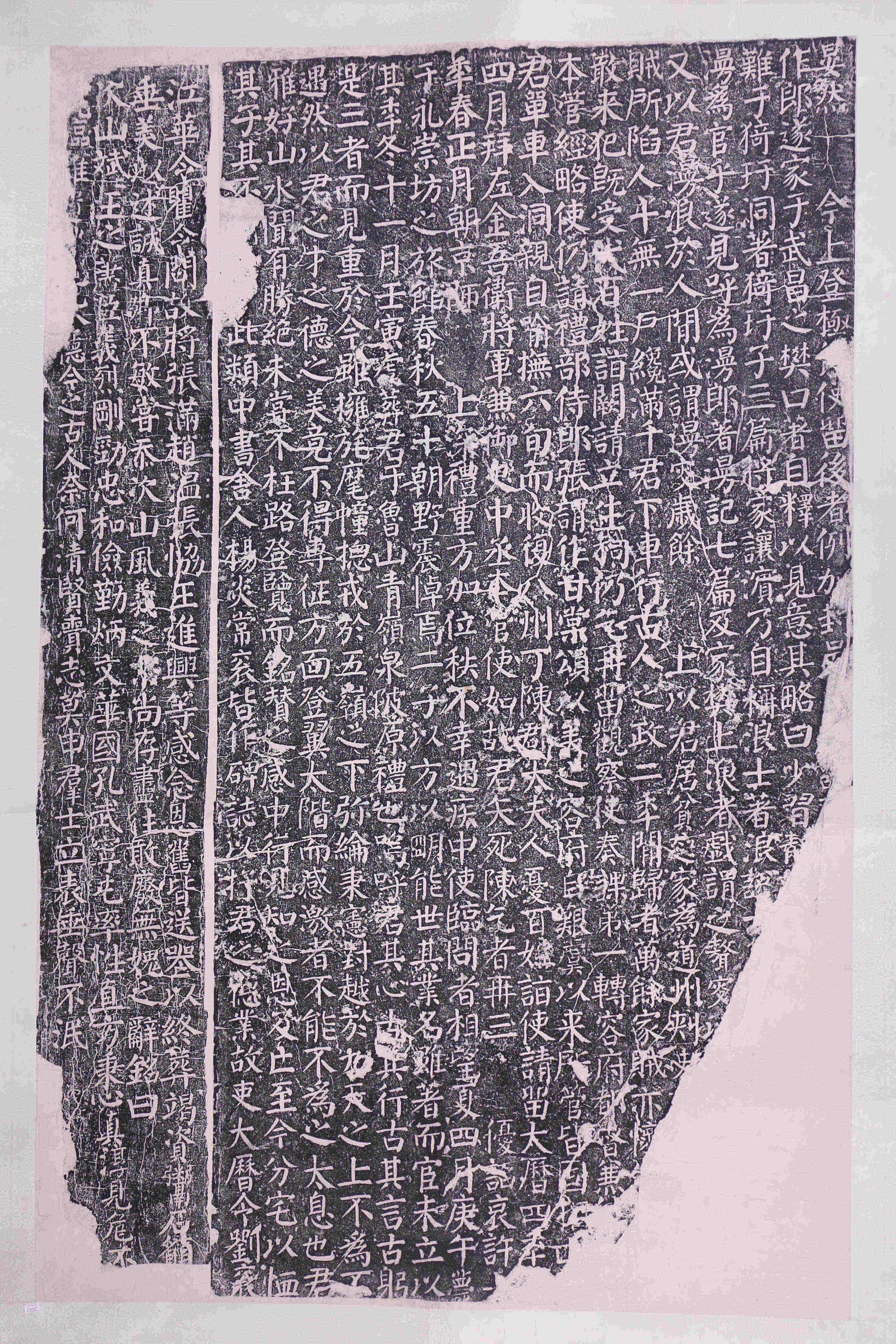Date: 772 (7th year of Dali reign), Tang Dynasty (618-907)
Provenance of the tombstone: Situated in a Confucius Temple in Lushan county, Pingdingshan, Henan province
Measurements of the tombstone: Height: 190 cm, Width: 95 cm, Thickness: 25 cm
The tombstone of Yuan Jie was erected in the eleventh lunar month in the 7th year of the Dali reign of the Tang Dynasty (772). The original tombstone features inscriptions on all four sides, and the text was composed and inscribed by Yan Zhenqing (709-784). Yuan Jie, courtesy name Cishan, was a native of Luoyang, born in Lushan county. He was a distinguished politician, military strategist, and literary figure during the Tang Dynasty (618-907). Yuan Jie and Yan Zhenqing, both loyal officials of the Tang court, shared straightforward personalities, standing firm in their principles and often falling victim to the machinations of treacherous officials. Their similar character and shared experience forged a deep friendship. After Yuan Jie's death, Yan Zhenqing, filled with grief, wrote this epitaph expressing his resentment towards those treacherous officials and his fond memories of his friend. The inscription provides an overview of Yuan Jie's family background, life achievements, date of death and burial, as well as his contributions during the An Lushan Rebellion. It conveys both hatred towards the rebels An Lushan and Shi Siming and admiration and mourning for Yuan Jie.
The calligraphy on the monument is also the work of Yan Zhenqing. As a leading calligrapher of the prosperous era of the Tang Dynasty, Yan Zhenqing's influence in Chinese calligraphy is comparable to that of Wang Xizhi. This monument, created when Yan was 63 years old, showcases a distinctive style with rounded brushstrokes and a robust and simple quality. It deviates from the angular style predominant for centuries, incorporating the circular style of seal script into regular script, enhancing the flexibility and thickness of strokes. This calligraphy style, known as "Yan style," exhibits a powerful and majestic demeanor, reflecting the prosperity and vibrant social atmosphere of the high Tang period.

